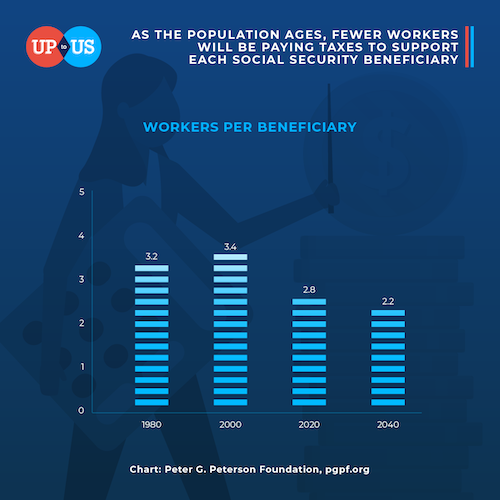November 12, 2020
Read time : 1 min
The federal debt is on an unsustainable path. As of November 2020, the US National Debt is at $27 trillion and counting. What resources and services does our government spend its budget on? How can this issue affect me in the future? How can we change our budgets to create a more fiscally sustainable future? Here are 6 charts that will help you to understand the national debt and its importance.
The Federal Debt is on an Unsustainable Path (Pandemic Update)

The Pandemic has accelerated an unsustainable fiscal trajectory. The U.S. National Deb is projected to increase by 195% in 2050. As the debt grows, so does the interest that americans citizens pay.
The Federal Revenues and Spending

The growing debt is caused by a structural mistmach between spending and revenues. Both the average federal spending and the average federal revenue are increasing at a different rate. The U.S. tax system does not generate enoguh revenues to cover the spending enacted by policimakers. The growing imbalance between revenues and spending leads to higher annual deficits.
Taxes and Social Security

As the population ages, fewer workers will be paying taxes to support each social security beneficiary. America is undergoing significant demogrhapic change. On average, people are expected to live longer. Thus, increases the pressure on the federal budget.
Non-Defense Discretionary Outlays in 2019 (Billion of Dollars) $661 Billion

Non-Defense discretionary spending funds a wide range of programs including: transportation, education, administration of justice, general government, housing assistance, veteran's benefits and services, health, international affairs, natural resources and environment, general science, space and technology, community and regional development, training employment and social services.
Solutions Initiative 2019: Projected Federal Debt

The projected federal debt held by the public in % of GDP.
Waiting To Act Raises The Cost Stabilizing Of The Debt

Waiting to act raises the cost stabilizing of the debt. There are three major drivers of the growing national debt: demographics, rising healtcare costs, and inadequate revenues. In order to stabilized the debt the size of the annual budget needs to change.
